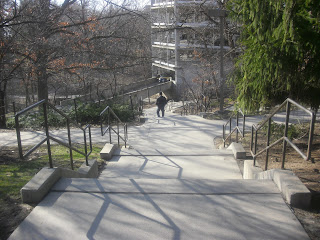Where I come from is an easy question for me to answer because the place I come from and my ancestry are mixed together to form the place I call home. My home is a family farm in northern Iowa. The farm has been in my family for over one hundred years. My great great grandparents on my dad’s side came over from Germany to buy the land and build the house. The original house burnt down in the 1920’s due to a fire that a traveling farmhand was suspected to have started. My great grandpa Ed built the house I live in today. He built the house to be one of the most modern homesteads in Iowa at the time. In fact, it was featured in an Iowa State journal because of the modern clothes chute and electrical system.
Since then, my house has been the backdrop for many family stories and events. My grandma was born and raised in my house. My dad grew up in my house. There are signs all over the farm of my relatives that lived there before I did. The initials D.H. are imprinted in the cement of the barn and a small house is carved in the doorframe of my bedroom. These artifacts remind me of all my relatives and just how many people have called my house home over the years. In fact, when I talk to me aunts and uncles, they each have a different special place in the house. For my aunt Sandy it’s the heat vent outside the kitchen that was always warm in the winter when the house became big and cold. She would put a blanket over it to trap the heat, and she would read until someone would yell at her to stop hogging the heat.
Over the years, my house has begun to take on a personality of its own. It’s a gathering place attracting people to come and stay. When my dad was growing up, his uncles would come and stay for months at a time. Now, my aunts and uncles come up and stay for the weekend or friends and family gather here for super bowl parties, birthdays, holidays and Sunday dinners. No one ever leaves hungry. The food is always tasty and abundant. A joke among my family is that the house attracts people to visit and never lets anyone leave with an empty stomach. This embodies what I love most about living where I do. There is always good company, good food, and it’s the place I call home.





























